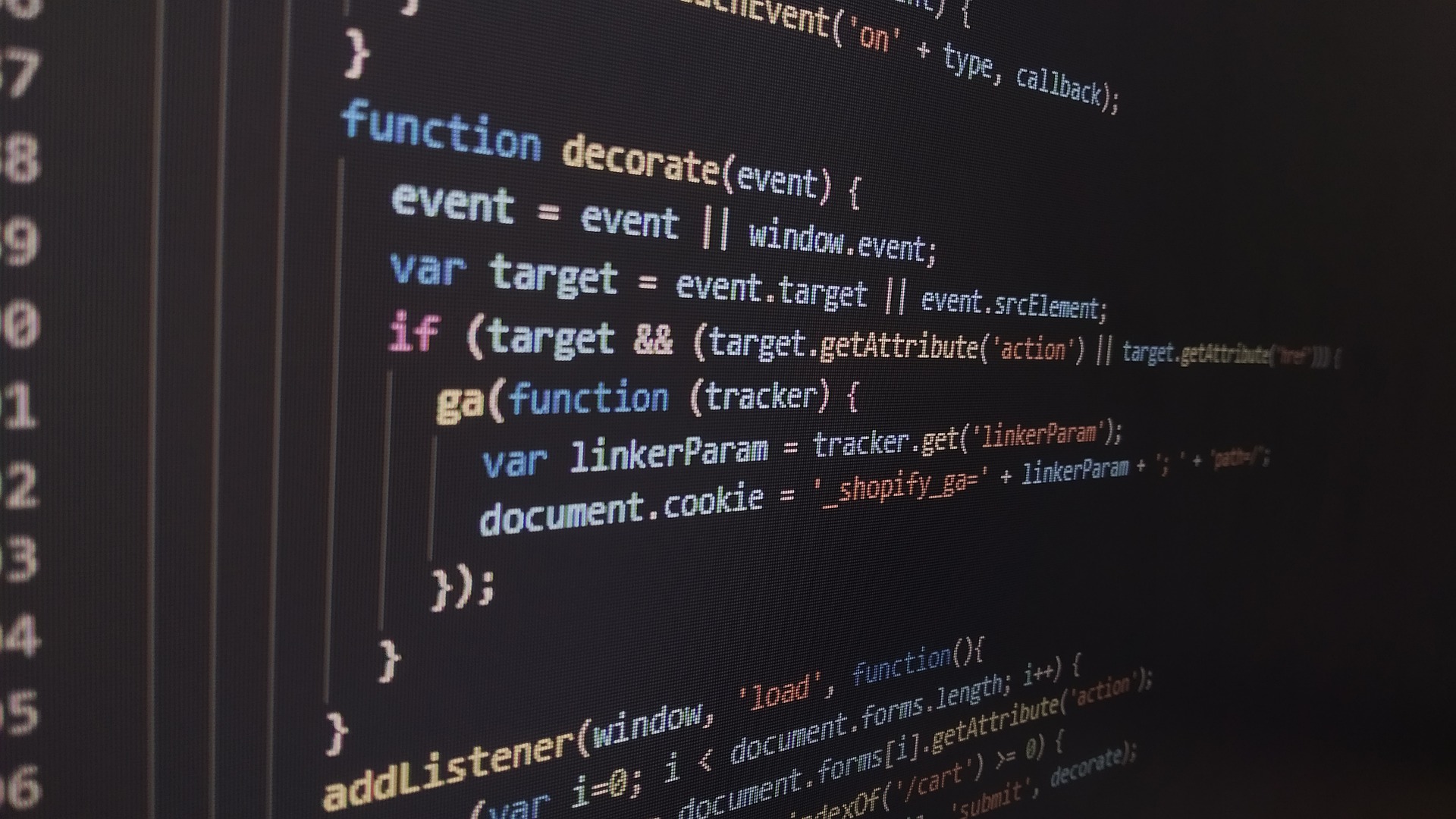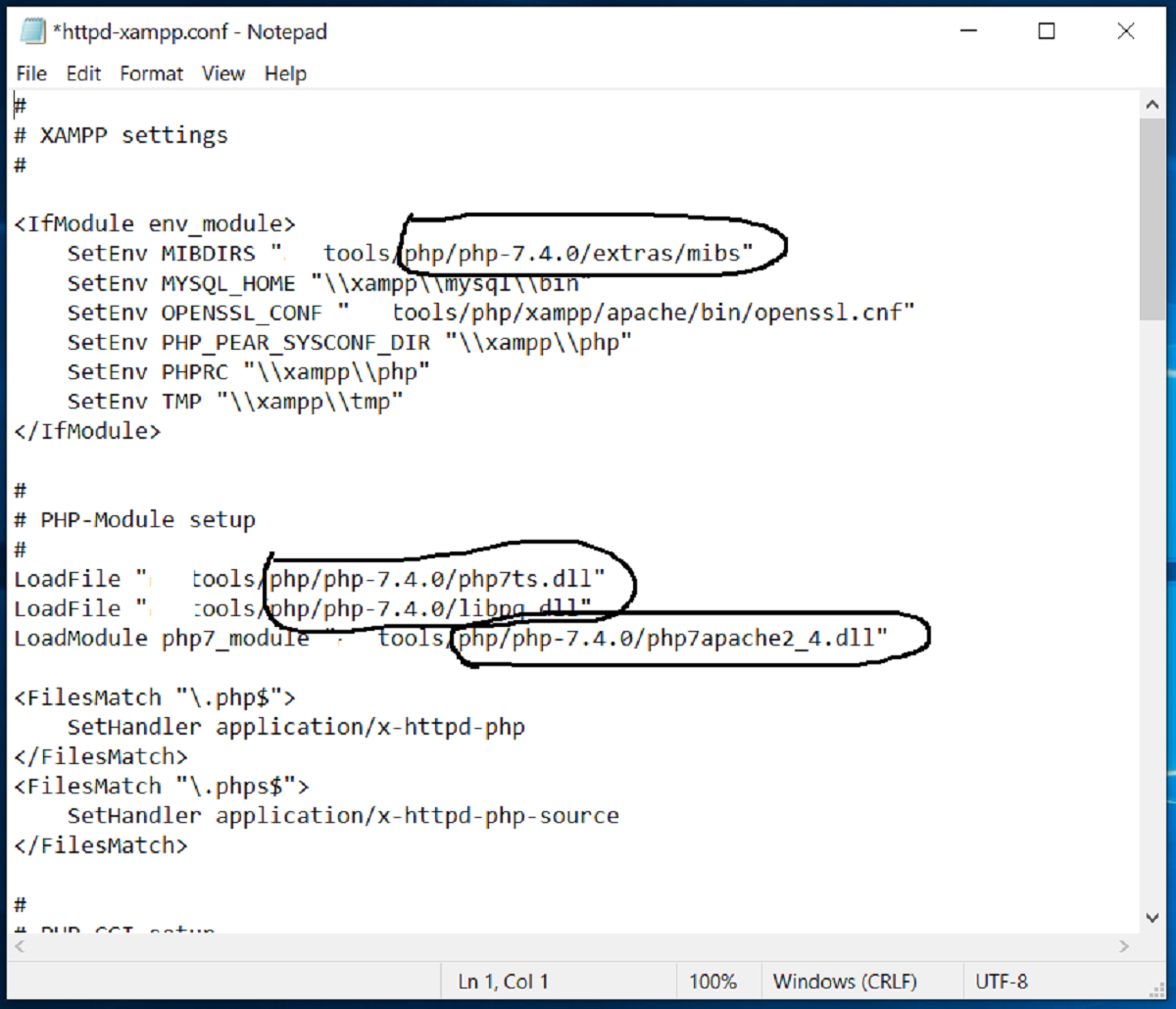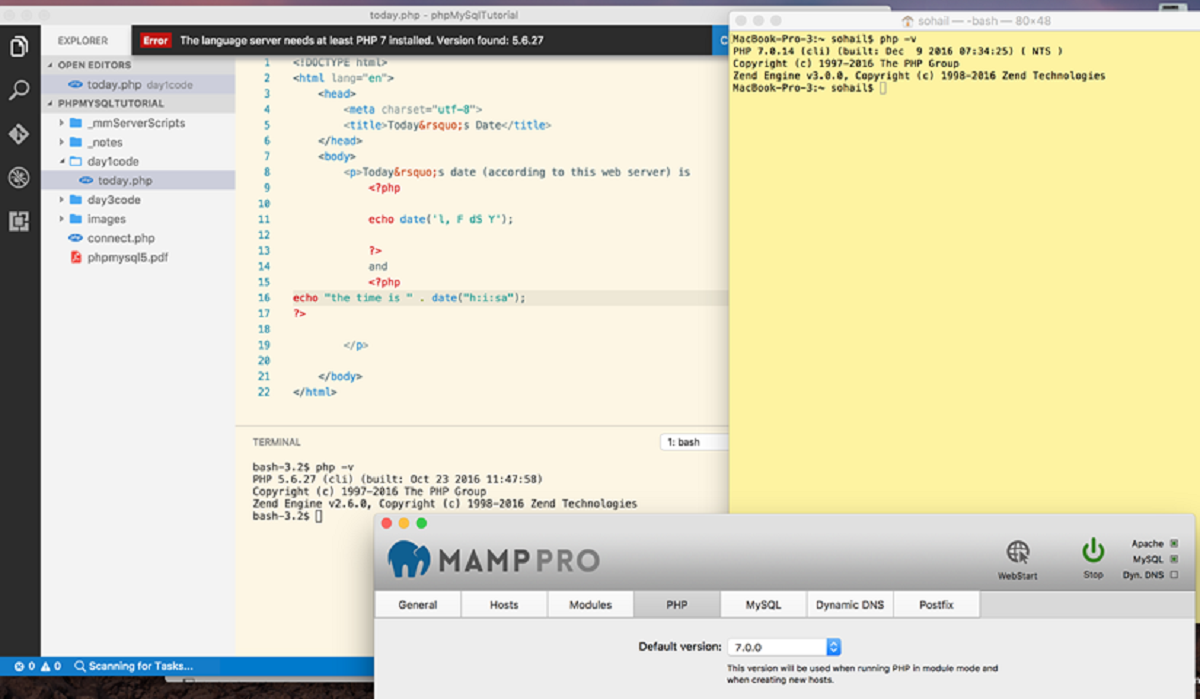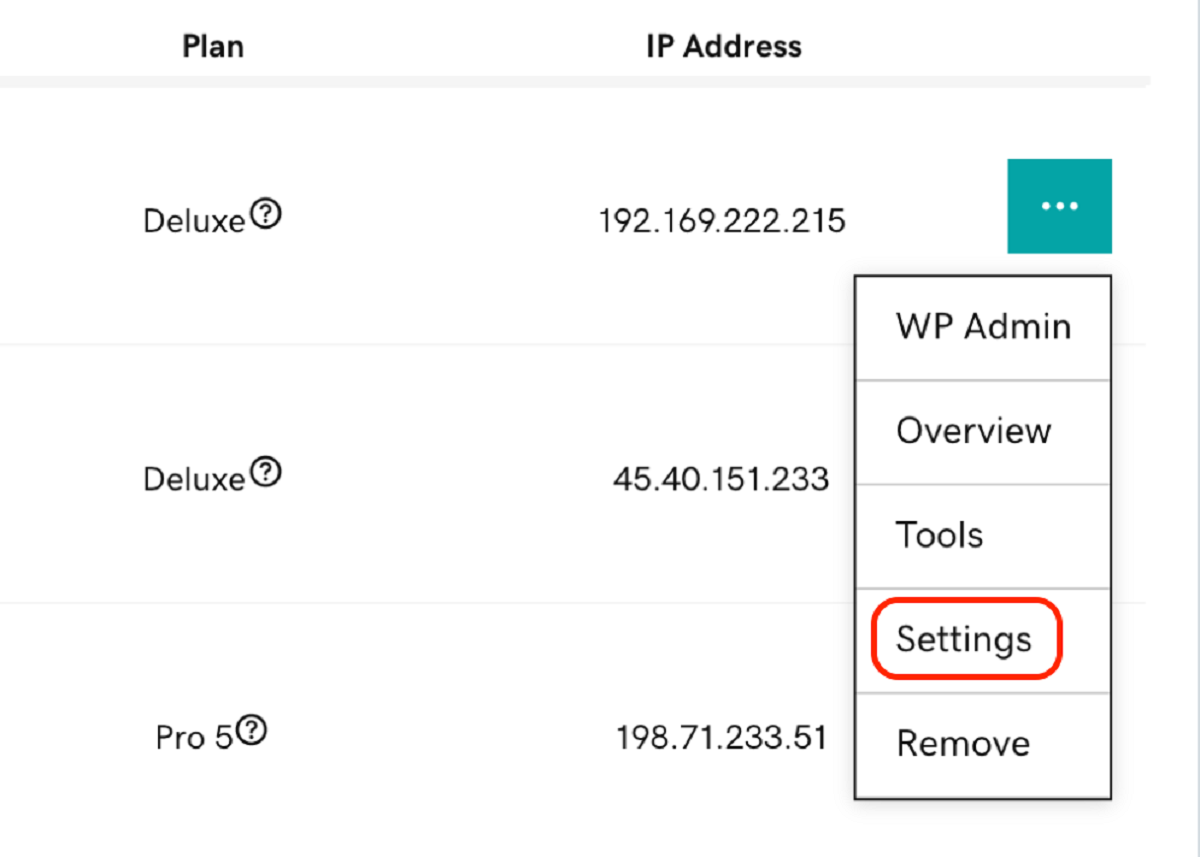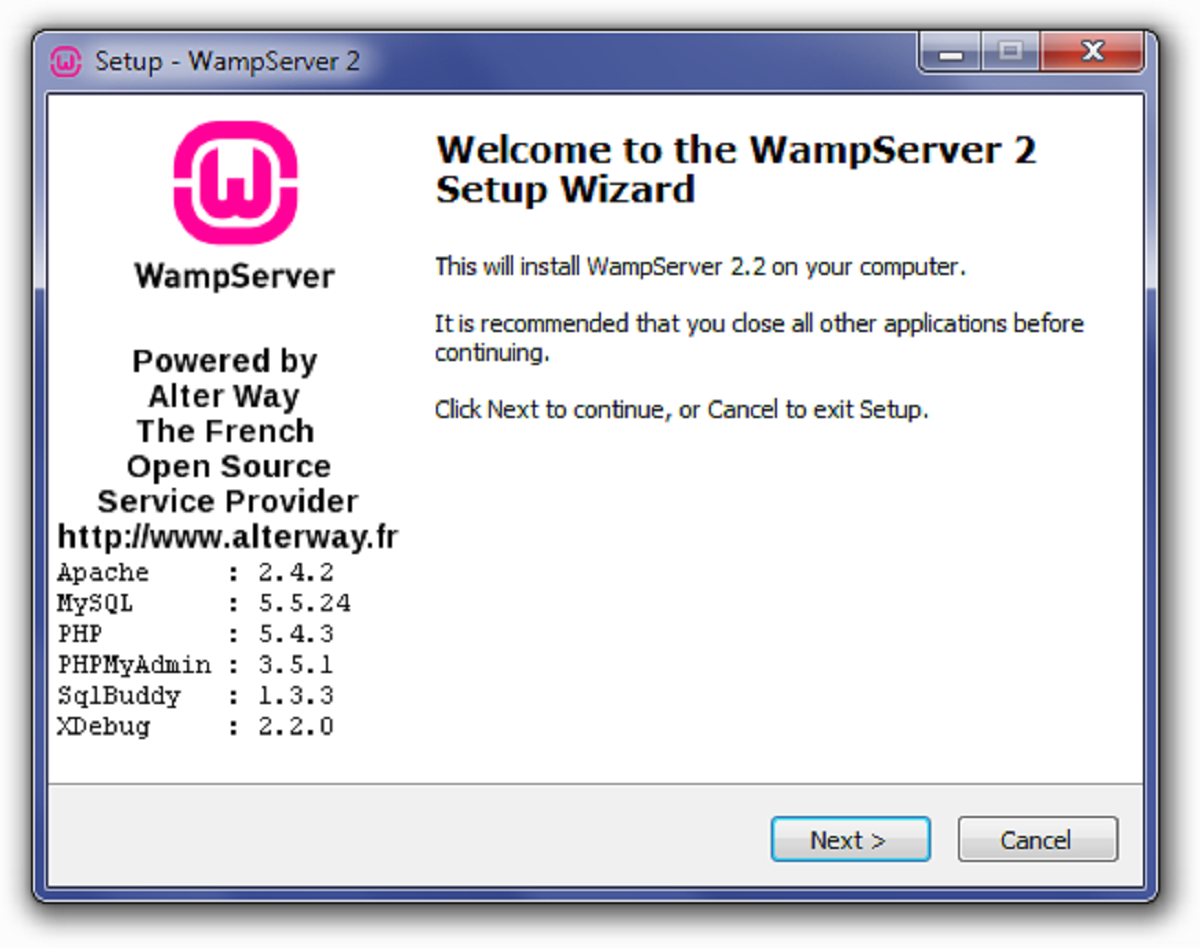Introduction
PHP, which stands for Hypertext Preprocessor, is a widely-used open-source scripting language that is specifically designed for web development. It is a powerful tool that allows developers to create dynamic websites and web applications. With its simplicity, versatility, and wide-spread support, PHP has become one of the most popular programming languages in the world.
PHP is a server-side scripting language, meaning that it runs on the web server before the page is sent to the user’s browser. This allows PHP to interact with databases, handle form submissions, generate dynamic content, and perform other tasks that enhance the user experience.
Setting up PHP on your web server is relatively easy. Most hosting providers offer PHP support, and the necessary files can be downloaded from the official PHP website. Once PHP is set up, you can start creating your own web applications and harness the power of this programming language.
In this article, we will explore the fundamental concepts of PHP programming and provide you with a comprehensive guide to get started with PHP development. We will cover topics such as variables and data types, operators and expressions, control structures, functions, arrays, string manipulation, file handling, database connectivity, object-oriented programming, error handling, and best practices for PHP coding.
Whether you are a beginner looking to learn PHP from scratch or an experienced developer seeking to brush up on your PHP skills, this guide is designed to cater to your needs. By the end of this article, you will have a solid foundation in PHP programming and be ready to create your own dynamic websites and web applications.
So, without further ado, let’s dive into the world of PHP development and unleash your coding potential. Let’s explore the ins and outs of PHP and discover how this versatile scripting language can bring your web projects to life.
Setting Up PHP
Before you can start coding in PHP, you need to set it up on your web server. Fortunately, most web hosting providers support PHP, making the setup process fairly straightforward.
The first step is to ensure that your web server has PHP installed. You can check this by creating a file with a .php extension and adding the following code:
Save the file and access it through a web browser. If you see a page with detailed information about your PHP installation, congratulations! PHP is already installed on your server. If not, you will need to install it.
To install PHP, you can visit the official PHP website (php.net) and download the latest version. There are also installation guides available on the website, which provide step-by-step instructions for various operating systems.
If you’re using a web hosting provider, they often have a control panel that allows you to easily enable PHP. Look for options like “PHP Configuration” or “PHP Settings” in your hosting account’s control panel. From there, you can enable PHP and specify the PHP version you want to use.
Once PHP is installed and enabled, you can start coding in PHP. Create a new file with a .php extension, and you’re ready to go. PHP code is typically enclosed in opening and closing PHP tags, like this:
Save your file and access it through a web browser by typing in the URL of the file. The PHP code will be executed on the server, and the output will be sent to the browser.
In some cases, you may need to configure additional settings, such as file upload limits, memory limits, or database connectivity. These settings can be modified in the php.ini file, which is usually located in the root directory of your PHP installation.
Setting up PHP on your web server is an essential step in PHP development. Once you have PHP installed and configured, you can unleash the power of this versatile scripting language and create dynamic and interactive web applications.
In the next section, we will explore the basics of PHP programming, including variables and data types. Let’s get started!
Variables and Data Types
In PHP, variables are used to store and manipulate data. A variable is essentially a container that holds a value, and this value can be changed throughout the program’s execution. PHP is a dynamically typed language, which means that you do not need to specify the data type of a variable explicitly.
To declare a variable in PHP, you simply use the dollar sign ($) followed by the variable name. For example:
$myVariable;
You can assign a value to a variable using the assignment operator (=). PHP supports various data types, including integers, floats, strings, booleans, and more.
Integers are whole numbers without decimal points. You can perform mathematical operations such as addition, subtraction, multiplication, and division with integer variables. For example:
$age = 25;
$salary = 5000;
$total = $age + $salary;
Floats, also known as floating point numbers, are numbers with decimal points. They can represent both whole and fractional values. For example:
$pi = 3.14;
$temperature = -12.5;
Strings are sequences of characters enclosed in single quotes (”) or double quotes (“”). They can be used to store text data. For example:
$name = 'John';
$message = "Hello, $name!";
Booleans can have one of two values: true or false. They are often used in conditional statements and logical operations. For example:
$loggedIn = true;
$isAdmin = false;
In PHP, there are also other data types available, such as arrays, objects, and null. These data types allow you to store and manipulate more complex data structures.
You can perform operations on variables using various operators, such as arithmetic operators (+, -, *, /), string concatenation operator (.), and comparison operators (==, <, >, <=, >=). PHP also provides shorthand assignment operators (+=, -=, *=, /=) to perform an operation on a variable and assign the result back to the same variable.
It’s important to note that PHP is a loosely typed language, which means that variables can change their data type during the program’s execution. This flexibility can be both powerful and complex, so it’s crucial to pay attention to variable types when performing operations.
In this section, we covered the basics of variables and data types in PHP. Understanding these concepts is fundamental to working with PHP and will lay the foundation for more advanced programming techniques.
Next, we will delve into operators and expressions in PHP. Let’s continue our journey into PHP programming!
Operators and Expressions
Operators and expressions play a crucial role in PHP programming, as they allow you to perform various operations on variables and values. PHP provides a wide range of operators, including arithmetic, assignment, comparison, logical, and string operators.
Arithmetic operators are used to perform mathematical operations on numeric values. These include addition (+), subtraction (-), multiplication (*), division (/), and modulus (%). For example:
$sum = 10 + 5; // 15
$difference = 10 - 5; // 5
$product = 10 * 5; // 50
$quotient = 10 / 5; // 2
$remainder = 10 % 3; // 1
Assignment operators are used to assign values to variables. The most common assignment operator is the equals sign (=), but PHP also provides shorthand assignment operators such as +=, -=, *=, and /=. For example:
$x = 10;
$x += 5; // $x is now 15
Comparison operators are used to compare two values and return a boolean result. These include equals (==), not equals (!=), greater than (>), less than (<), greater than or equal to (>=), and less than or equal to (<=). For example:
$a = 10;
$b = 5;
$result = $a > $b; // true
Logical operators are used to combine multiple conditions and evaluate the result. These include AND (&&), OR (||), and NOT (!). For example:
$a = true;
$b = false;
$result = $a && $b; // false
$result = $a || $b; // true
String operators are used to concatenate or manipulate strings. The concatenation operator (.) is used to join two strings together. For example:
$name = "John";
$greeting = "Hello, " . $name . "!"; // Hello, John!
In addition to these basic operators, PHP also provides other operators for working with arrays, objects, and more complex data types.
Expressions in PHP are combinations of variables, values, and operators that are evaluated to produce a result. For example:
$x = 10;
$y = 5;
$result = $x + $y * 2; // 20
It’s important to understand the order of operations in expressions and use parentheses to enforce the desired evaluation order.
In this section, we covered the various operators and expressions available in PHP. By mastering these concepts, you can perform complex calculations, make logical decisions, manipulate strings, and work with different data types effectively.
Next, we will explore control structures in PHP, which allow you to control the flow of execution in your code. Let’s continue our PHP journey!
Control Structures
Control structures are essential components of any programming language, including PHP. They allow you to control the flow of execution in your code and make decisions based on certain conditions. PHP offers a variety of control structures, including if-else statements, switch statements, loops, and more.
If-else statements allow you to execute different blocks of code based on a specific condition. The if statement checks if a condition is true, and if so, it executes a block of code. The else statement provides an alternative block of code to execute if the condition is false. For example:
if ($age < 18) {
echo "You are not old enough to vote.";
} else {
echo "You are eligible to vote.";
}
Switch statements are useful when you have a single variable with multiple possible values. The switch statement evaluates the variable and executes the code block that corresponds to the matching value. It’s an alternative to using multiple if-else statements. For example:
$day = "Monday";
switch ($day) {
case "Monday":
echo "Today is Monday.";
break;
case "Tuesday":
echo "Today is Tuesday.";
break;
default:
echo "Today is another day.";
break;
}
Loops allow you to repeat a block of code multiple times. PHP supports different types of loops, including the while loop, do-while loop, for loop, and foreach loop.
The while loop executes a block of code as long as a specified condition is true. For example:
$count = 1;
while ($count <= 5) {
echo "Count: " . $count . "
";
$count++;
}
The do-while loop is similar to the while loop, but it executes the code block at least once before checking the condition. For example:
$count = 1;
do {
echo "Count: " . $count . "
";
$count++;
} while ($count <= 5);
The for loop is used when you know the exact number of iterations. It consists of an initialization, condition, and increment/decrement statement. For example:
for ($i = 1; $i <= 5; $i++) {
echo "Number: " . $i . "
";
}
The foreach loop is specifically designed for iterating over arrays or collection-like objects. It simplifies the process of accessing and manipulating array elements. For example:
$fruits = array("apple", "banana", "orange");
foreach ($fruits as $fruit) {
echo "Fruit: " . $fruit . "
";
}
Control structures are powerful tools that allow you to control the flow and logic of your PHP programs. By utilizing if-else statements, switch statements, and different types of loops, you can create dynamic and responsive applications.
In the next section, we will explore functions in PHP, which allow you to group related code and reuse it throughout your program. Let’s continue our PHP journey!
Functions
Functions are a fundamental concept in PHP programming. They allow you to encapsulate a block of code and reuse it throughout your program. Functions help promote code reusability, modularity, and maintainability.
In PHP, a function is defined using the function keyword, followed by a function name and a pair of parentheses. Any parameters the function accepts are listed within the parentheses. For example:
function sayHello($name) {
echo "Hello, " . $name . "!";
}
To use a function, you simply call it by its name, passing any necessary arguments. For example:
sayHello("John"); // Hello, John!
Functions can also return values using the return statement. For example, a function that calculates the sum of two numbers and returns the result:
function calculateSum($num1, $num2) {
$sum = $num1 + $num2;
return $sum;
}
$result = calculateSum(5, 10);
echo $result; // 15
In PHP, you can also define default values for function parameters. If a value is not provided when calling the function, the default value will be used instead. For example:
function sayHello($name = "Guest") {
echo "Hello, " . $name . "!";
}
sayHello(); // Hello, Guest!
sayHello(“John”); // Hello, John!
PHP supports both built-in functions (such as strlen() to get the length of a string) and user-defined functions (functions that you create in your code).
Using functions has several advantages. First, they help organize your code by breaking it down into smaller, reusable components. This makes your code more manageable and easier to read. Second, they promote code reusability, allowing you to use the same block of code in multiple places without duplicating it. Third, functions enhance modularity, as you can easily modify or update a particular function without affecting other parts of your code. Finally, functions improve code maintenance by isolating specific tasks, making it easier to debug and troubleshoot.
By leveraging functions, you can write cleaner, modular, and more efficient PHP code. Whether you are building a small script or a large-scale application, functions are an essential tool in your PHP programming arsenal.
Next, we will discuss arrays in PHP and how they can be used to store and manipulate collections of data. Let’s continue our PHP journey!
Arrays
Arrays are a fundamental data structure in PHP that allow you to store and manipulate collections of data. An array is a variable that can hold multiple values, called elements, which can be of the same or different data types. Arrays in PHP can be indexed or associative.
Indexed arrays use numeric indices to access elements. The first element has an index of 0, the second element has an index of 1, and so on. To create an indexed array, you can use the array() function or the shorthand square bracket notation. For example:
$fruits = array("apple", "banana", "orange");
// or
$fruits = ["apple", "banana", "orange"];
To access elements in an indexed array, use the corresponding index. For example:
echo $fruits[0]; // apple
echo $fruits[1]; // banana
echo $fruits[2]; // orange
Associative arrays use key-value pairs to access elements. Each element in the array is associated with a unique key. To create an associative array, you can specify the key-value pairs using the arrow operator (=>) or the shorthand array syntax. For example:
$user = array("name" => "John", "age" => 25, "email" => "john@example.com");
// or
$user = ["name" => "John", "age" => 25, "email" => "john@example.com"];
To access elements in an associative array, use the corresponding key. For example:
echo $user["name"]; // John
echo $user["age"]; // 25
echo $user["email"]; // john@example.com
Arrays in PHP are dynamic, meaning you can add, modify, or remove elements easily. To add elements to an array, you can use the square bracket notation with a new index or a new key-value pair. For example:
$fruits[] = "grape"; // adds "grape" at the end of the indexed array
$user["address"] = "123 Main St"; // adds a new key-value pair to the associative array
To modify the value of an existing element, simply assign a new value to the corresponding index or key. For example:
$fruits[0] = "pear"; // changes the value of the first element in the indexed array to "pear"
$user["age"] = 30; // changes the value of the "age" key in the associative array to 30
To remove an element from an array, you can use the unset() function. For example:
unset($fruits[0]); // removes the first element from the indexed array
unset($user["email"]); // removes the "email" key from the associative array
Arrays in PHP can also be multidimensional, meaning they can contain other arrays as elements. This allows you to represent more complex data structures. For example:
$matrix = [[1, 2, 3], [4, 5, 6], [7, 8, 9]]; // a 3x3 matrix as a multidimensional indexed array
In this section, we explored how arrays can be used to store and manipulate collections of data in PHP. Whether you need to store a list of values or organize data in a structured manner, arrays provide a flexible and powerful solution.
Next, we will cover string manipulation in PHP, including how to manipulate and process text data. Let’s continue our PHP journey!
String Manipulation
String manipulation is a common task in PHP development, as it involves working with text data and manipulating it to suit specific needs. PHP provides a variety of built-in functions and operators to perform string manipulation operations efficiently.
Concatenation is one of the most basic string manipulation operations. It allows you to combine multiple strings together. In PHP, the concatenation operator is the period (.) symbol. For example:
$name = "John";
$greeting = "Hello, " . $name . "!";
echo $greeting; // Hello, John!
String length is often needed to determine the number of characters in a string. PHP provides the strlen() function to retrieve the length of a string. For example:
$message = "Hello, World!";
$length = strlen($message);
echo $length; // 13
String case conversion allows you to convert strings to uppercase or lowercase. PHP provides the strtolower() and strtoupper() functions for this purpose. For example:
$text = "Hello, World!";
$lowercase = strtolower($text);
$uppercase = strtoupper($text);
echo $lowercase; // hello, world!
echo $uppercase; // HELLO, WORLD!
Substring extraction is used to extract a portion of a string. PHP provides the substr() function, which allows you to specify the starting position and optional length of the substring. For example:
$text = "Hello, World!";
$substring = substr($text, 7);
echo $substring; // World!
$substring = substr($text, 0, 5);
echo $substring; // Hello
String searching and replacement functions allow you to search for a specific substring within a larger string and replace it with a new substring. PHP provides functions like strpos(), str_replace(), and str_ireplace() for these operations. For example:
$text = "Hello, World!";
$position = strpos($text, "World");
echo $position; // 7
$newText = str_replace(“World”, “John”, $text);
echo $newText; // Hello, John!
String splitting is used to divide a string into an array of substrings based on a specified delimiter. PHP provides the explode() function for this purpose. For example:
$text = "apple, banana, orange";
$fruits = explode(",", $text);
print_r($fruits); // Array ( [0] => apple [1] => banana [2] => orange )
These are just a few examples of the many string manipulation functions and techniques available in PHP. These operations allow you to dynamically process and modify text data according to your specific requirements.
Next, we will explore file handling in PHP, including how to read from and write to files. Let’s continue our PHP journey!
File Handling
File handling is a crucial aspect of PHP development, as it allows you to read data from files, write data to files, and manipulate files in various ways. PHP provides a range of functions and methods that make file handling efficient and straightforward.
Opening and closing files is the first step in file handling. PHP provides the fopen() function to open a file and return a file handle, which is used to perform operations on the file. For example:
$handle = fopen("myfile.txt", "r"); // open a file in read mode
After you’ve finished working with a file, it’s important to close it using the fclose() function to free system resources. For example:
fclose($handle); // close the file
Reading from files is a common file handling operation. PHP provides functions like fread() and fgets() to read data from a file. For example:
$handle = fopen("myfile.txt", "r");
$data = fread($handle, filesize("myfile.txt")); // read the entire file
echo $data;
Writing to files allows you to save data to a file. PHP provides functions like fwrite() and file_put_contents() for this purpose. For example:
$handle = fopen("myfile.txt", "w"); // open a file in write mode
fwrite($handle, "Hello, World!"); // write data to the file
fclose($handle); // close the file
Appending to files is useful when you want to add data to an existing file without overwriting its contents. PHP provides the fwrite() function with the “a” flag to open a file in append mode. For example:
$handle = fopen("myfile.txt", "a"); // open a file in append mode
fwrite($handle, "New data!"); // append data to the file
fclose($handle); // close the file
Checking file existence and permissions is important before performing file operations. PHP provides functions such as file_exists() and is_readable() to check if a file exists and is readable. For example:
if (file_exists("myfile.txt")) {
if (is_readable("myfile.txt")) {
// Perform file handling operations
} else {
echo "The file is not readable.";
}
} else {
echo "The file does not exist.";
}
Deleting files is done using the unlink() function. For example:
unlink("myfile.txt"); // delete the file
File handling in PHP allows you to interact with files, read and write data, and perform various operations. It’s crucial to handle files properly, including opening and closing them, and checking for permissions and existence to ensure smooth and secure file handling operations.
Next, we will explore database connectivity in PHP, including how to interact with databases and perform CRUD (Create, Read, Update, Delete) operations. Let’s continue our PHP journey!
Database Connectivity
Database connectivity is a fundamental aspect of PHP development, as it allows you to interact with databases to store, retrieve, update, and delete data. PHP provides various extensions and libraries to establish database connections and perform database operations efficiently.
To connect to a database, you need to use the appropriate PHP extension for the database you are working with. Common database extensions in PHP include MySQLi (MySQL improved), PDO (PHP Data Objects), and PostgreSQL. Here’s an example of establishing a MySQLi database connection:
$servername = "localhost";
$username = "root";
$password = "password";
$database = "mydatabase";
// Create a connection
$connection = mysqli_connect($servername, $username, $password, $database);
// Check if the connection is successful
if (!$connection) {
die(“Connection failed: ” . mysqli_connect_error());
}
echo “Connected successfully”;
Once the database connection is established, you can perform CRUD (Create, Read, Update, Delete) operations using SQL queries. For example, let’s retrieve data from a table:
// Prepare and execute a SELECT query
$sql = "SELECT * FROM users";
$result = mysqli_query($connection, $sql);
// Check if the query was successful
if (mysqli_num_rows($result) > 0) {
// Loop through the result and process each row
while ($row = mysqli_fetch_assoc($result)) {
echo “Username: ” . $row[‘username’] . “, Email: ” . $row[’email’];
}
} else {
echo “No records found”;
}
// Free the result set
mysqli_free_result($result);
In addition to SELECT queries, you can also execute INSERT, UPDATE, and DELETE queries to create, update, and delete data in the database.
It’s important to properly handle database errors and handle exceptions when working with databases. You can use error handling techniques like try-catch blocks to handle any errors that occur during database operations.
In addition to the procedural style of database connectivity shown above, PHP also offers an object-oriented approach using the PDO extension. PDO provides a unified interface to work with different databases, making it more flexible and portable.
Using PDO, you can connect to a database, execute SQL queries, and handle transactions with ease. Here’s an example of connecting to a MySQL database using PDO:
$dsn = "mysql:host=localhost;dbname=mydatabase";
$username = "root";
$password = "password";
try {
// Create a new PDO instance
$pdo = new PDO($dsn, $username, $password);
echo “Connected successfully”;
} catch (PDOException $e) {
die(“Connection failed: ” . $e->getMessage());
}
With PDO, you can use prepared statements to prevent SQL injection attacks and improve the security of your database operations.
Database connectivity in PHP opens up a world of possibilities for storing, retrieving, and managing data. Whether you are working with MySQL, PostgreSQL, or other databases, PHP provides the tools and libraries necessary to establish connections and perform database operations efficiently.
Next, we will delve into object-oriented programming (OOP) in PHP, including how to create classes, objects, and utilize OOP principles. Let’s continue our PHP journey!
Object-Oriented Programming in PHP
Object-oriented programming (OOP) is a programming paradigm that allows you to create reusable, modular, and efficient code by organizing data and behavior into objects. PHP fully supports OOP concepts, enabling you to create classes, objects, and leverage inheritance, encapsulation, and polymorphism.
A class is a blueprint for creating objects. It defines the properties and methods that an object of that class will have. Here’s an example of a class representing a basic ‘Car’ object:
class Car {
// Properties
public $brand;
public $model;
public $color;
// Methods
public function start() {
echo “The ” . $this->brand . ” ” . $this->model . ” has started.”;
}
public function drive() {
echo “The ” . $this->brand . ” ” . $this->model . ” is driving.”;
}
public function stop() {
echo “The ” . $this->brand . ” ” . $this->model . ” has stopped.”;
}
}
An object is an instance of a class. It represents a specific entity based on the class blueprint. To create an object, you need to use the `new` keyword followed by the class name. You can then access the object’s properties and call its methods. For example:
$myCar = new Car();
$myCar->brand = "Toyota";
$myCar->model = "Camry";
$myCar->color = "Blue";
$myCar->start(); // The Toyota Camry has started.
$myCar->drive(); // The Toyota Camry is driving.
$myCar->stop(); // The Toyota Camry has stopped.
Inheritance allows you to create new classes based on existing classes. The child class inherits properties and methods from the parent class, and can also add its own unique properties and methods. Here’s an example:
class SportsCar extends Car {
// Additional properties
public $topSpeed;
// Additional methods
public function goFast() {
echo “The ” . $this->brand . ” ” . $this->model . ” is going fast!”;
}
}
$sportsCar = new SportsCar();
$sportsCar->brand = “Ferrari”;
$sportsCar->model = “488 GTB”;
$sportsCar->color = “Red”;
$sportsCar->topSpeed = 205;
$sportsCar->start(); // The Ferrari 488 GTB has started.
$sportsCar->goFast(); // The Ferrari 488 GTB is going fast.
$sportsCar->stop(); // The Ferrari 488 GTB has stopped.
Encapsulation allows you to encapsulate the properties and methods of a class, ensuring that they are accessible only within the class or through defined access methods. This enhances code organization and security. By declaring properties as private or protected, you control the access level. For example:
class Person {
private $name;
public function setName($name) {
$this->name = $name;
}
public function getName() {
return $this->name;
}
}
$person = new Person();
$person->setName(“John”);
echo $person->getName(); // John
Polymorphism allows objects of different classes to be treated as objects of a common parent class. This allows for more flexible and modular code. Polymorphism is achieved through method overriding and interfaces in PHP.
Object-oriented programming in PHP brings the advantages of code reusability, modularity, maintainability, and scalability. It allows you to create complex systems with well-organized and efficient code.
Next, we will explore error handling in PHP and best practices for writing reliable and secure PHP code. Let’s continue our PHP journey!
Error Handling
Error handling is an essential aspect of PHP programming that involves detecting, handling, and reporting errors and exceptions that occur during the execution of a PHP script. By properly handling errors, you can improve the reliability, security, and maintainability of your PHP code.
In PHP, errors can occur due to various reasons, such as syntax errors, logical errors, runtime errors, or external factors like database connectivity issues. To effectively handle these errors, PHP provides a variety of error handling mechanisms.
Error Reporting is the process of displaying or logging error messages to help identify and troubleshoot issues. PHP provides the error_reporting() function to set the level of error reporting. Common options include:
error_reporting(E_ALL | E_STRICT);
// This setting reports all errors, including strict standards
error_reporting(E_ERROR | E_WARNING | E_PARSE);
// This setting reports only fatal errors, warnings, and parse errors
Exception Handling is a mechanism that allows you to handle and recover from exceptional scenarios. Exceptions are objects that represent errors or exceptional conditions. In PHP, you can use the try-catch block to handle exceptions. For example:
try {
// Code that may throw an exception
} catch (Exception $e) {
// Code to handle the exception
}
You can throw exceptions manually using the throw keyword or let PHP throw predefined exceptions when certain conditions are met. Custom exception classes can also be created to handle specific error scenarios.
Error Logging involves recording error messages and related information in a log file. This helps in diagnosing issues and monitoring application behavior. PHP provides the error_log() function to log errors to a specified file or system log. For example:
error_log("An error occurred: " . $errorMessage, 3, "/var/log/php-errors.log");
Furthermore, PHP has configuration settings like display_errors, log_errors, and error_log in the php.ini file that allow you to control error handling behavior globally.
Best practices for error handling in PHP include:
1. Always enable error reporting and develop with the highest level of error reporting during the development phase.
2. Use consistent coding practices to minimize syntax and logical errors.
3. Implement proper validation and sanity checks to prevent runtime errors.
4. Use try-catch blocks to handle exceptions, providing meaningful error messages to users.
5. Log errors to maintain an audit trail and diagnose issues in production environments.
6. Regularly review and monitor error logs, and address recurring error patterns or critical errors promptly.
By implementing effective error handling techniques, you can build robust and reliable PHP applications that gracefully handle errors and exceptions, improving the overall user experience and application stability.
Next, we will explore some best practices for PHP coding that can help improve code readability, performance, and security. Let’s continue our PHP journey!
Best Practices for PHP Coding
Following best practices for PHP coding is crucial to ensure well-structured, readable, and maintainable code. These practices not only improve code quality but also enhance performance, security, and scalability. Here are some key best practices to consider:
1. Use meaningful variable and function names: Choose descriptive names that accurately reflect the purpose or functionality of variables and functions. This improves code readability and makes it easier for other developers to understand your code.
2. Maintain consistent coding style: Consistency in indentation, spacing, naming conventions, and formatting makes code more readable and maintainable. Adhering to a standard coding style, such as PSR-12, helps ensure consistency within a project or across multiple developers.
3. Sanitize user inputs: Properly validate and sanitize user inputs to prevent security vulnerabilities such as SQL injection and cross-site scripting (XSS) attacks. Utilize PHP functions like `mysqli_real_escape_string()` or prepared statements when working with databases, and HTML sanitization functions like `htmlspecialchars()` when outputting user-generated content.
4. Avoid direct output in functions: Separate logic and presentation by avoiding direct output in functions. Instead, return values and handle output in separate parts of your codebase, allowing for easier debugging and testing.
5. Use comments and documentation: Document your code using comments to provide explanations for complex or crucial sections, making it easier for other developers to understand your code. Additionally, consider providing inline documentation using tools like PHPDoc to generate documentation automatically.
6. Handle errors and exceptions gracefully: Implement proper error and exception handling techniques to handle errors gracefully, provide meaningful error messages to users, and record traceable error logs for debugging and maintenance.
7. Optimize database interactions: Use proper indexing, limit the number of database queries, and utilize caching mechanisms like Redis or Memcached to reduce database load and improve performance.
8. Validate and sanitize form inputs: Before processing form inputs, validate user data using PHP’s built-in validation functions or regular expressions and sanitize the data to prevent potential security vulnerabilities.
9. Use security measures: Implement secure password hashing using functions like `password_hash()` and `password_verify()` and ensure secure data transmission by using SSL/TLS encryption. Additionally, keep your PHP installation and libraries up to date to mitigate potential security risks.
10. Optimize code performance: Optimize code performance by minimizing database queries, reducing file or network I/O operations, and caching frequently accessed data. Utilize PHP opcode caches like OPcache to improve PHP execution speed.
By following these best practices, you can write cleaner, more efficient, and secure PHP code. It’s also essential to stay updated on the latest PHP releases and best practices to leverage new features and improvements in the language.
Next, we will conclude our PHP journey and recap the key points covered in this article.
Conclusion
In this article, we explored various aspects of PHP development, covering essential topics such as setting up PHP, variables and data types, operators and expressions, control structures, functions, arrays, string manipulation, file handling, database connectivity, object-oriented programming, error handling, and best practices for PHP coding.
We learned how to set up PHP on a web server, declare variables and use different data types. We explored operators and expressions for performing mathematical calculations and logical operations. Control structures such as if-else statements, switch statements, and loops allowed us to control the flow of program execution.
We delved into functions to encapsulate and reuse code, and learned about arrays, which enable us to store and manipulate collections of data efficiently.
String manipulation allowed us to work with and modify text data effectively. File handling mechanisms enabled reading from and writing to files, while database connectivity allowed us to interact with databases and perform CRUD operations.
Object-oriented programming introduced the concepts of classes, objects, inheritance, encapsulation, and polymorphism, enabling us to create modular and reusable code.
We discussed error handling to detect, handle, and log errors and exceptions that occur during script execution. Additionally, we explored best practices for PHP coding, including using meaningful names, maintaining consistent coding style, and properly validating and sanitizing user inputs for security.
By following these best practices and using the knowledge gained throughout this article, you can write clean, efficient, secure, and maintainable PHP code for a range of web development projects.
PHP’s versatility, simplicity, and extensive community support make it a popular choice for web development. With this newfound understanding of PHP, you are well-equipped to embark on your PHP coding journey, create dynamic websites, and build powerful web applications.
Happy coding in PHP!







